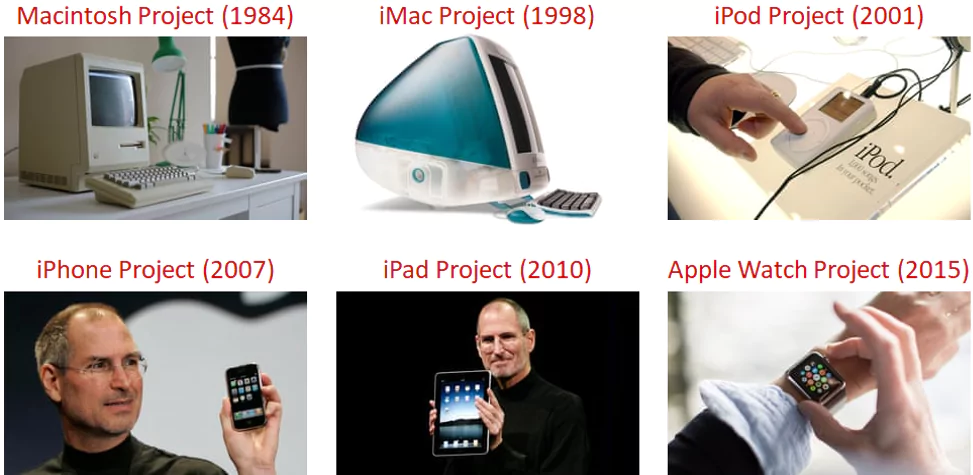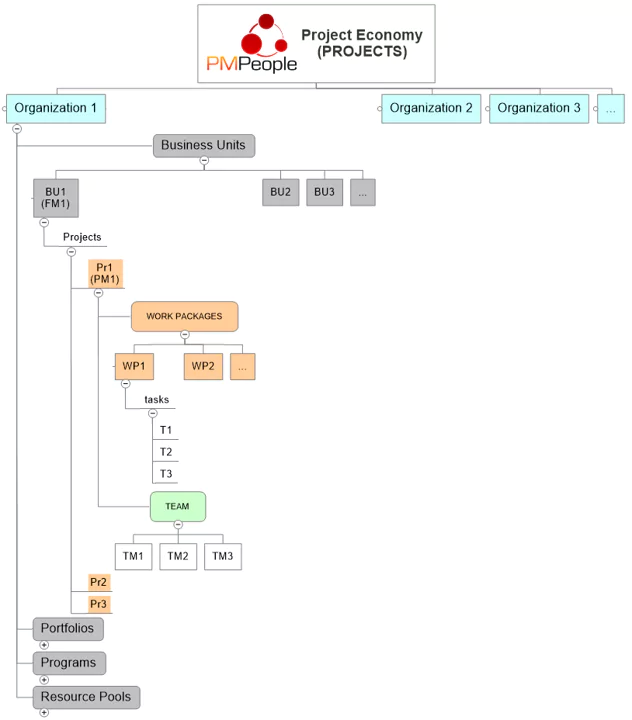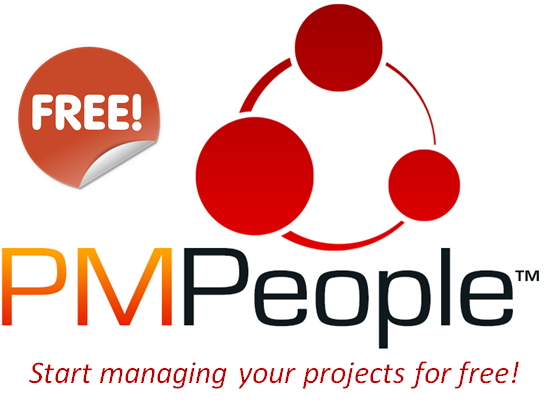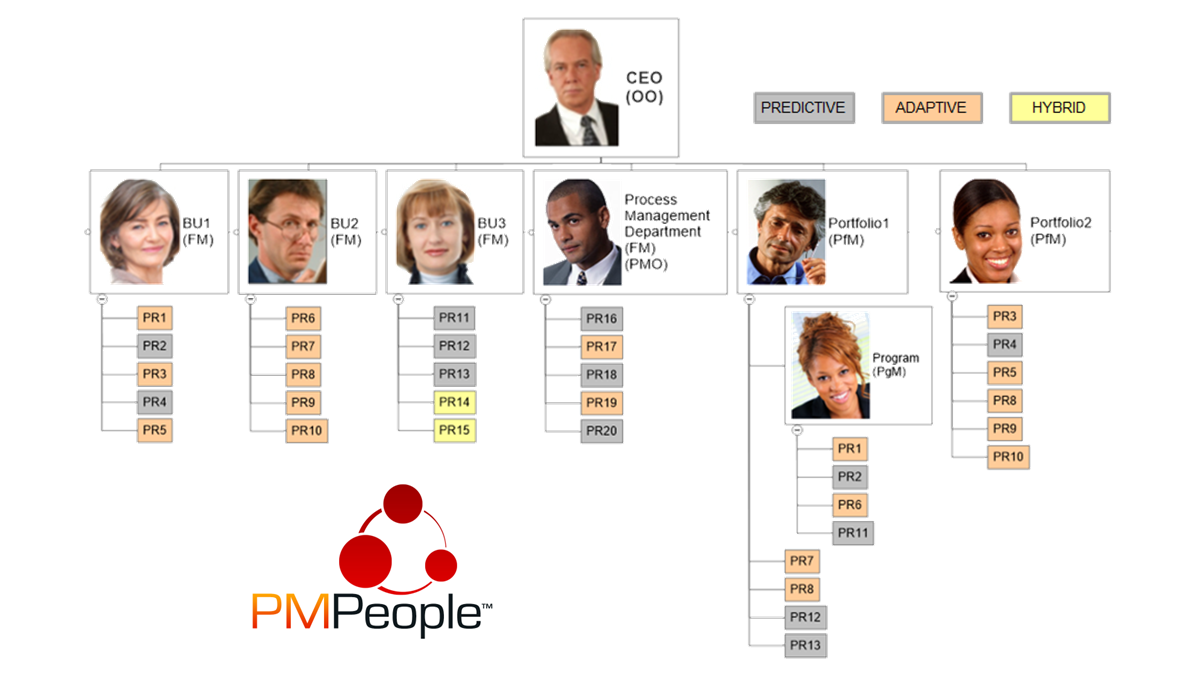If you run a company selling products or services to your clients, you surely have two main concerns in mind: “run the business” and “change the business”. “Run the business” means manufacturing, transport, sales, procurement, HR, marketing, training, defect repair, dealing with angry customers, etc. All these repetitive day-to-day operations are managed under the operations management paradigm. Thanks to operations management, you can submit invoices and pay salaries. However, in such a competitive economy as the current one, operational excellence is no longer enough to grow and translate value to the shareholder. You need also to “change the business” to beat your competition, to open new markets, to launch new products, to innovate and improve processes, etc. “Change the business” means project management.
Poor Project Management
Many companies manage projects as operations. This is especially painful in companies that sell projects to clients and manage those projects just by counting how many working hours are submitted or pending.
Many companies sell projects, but manage hours 🙁
If there is a person in charge of a project, he or she is usually focused on tracking team members’ tasks. This “project manager” does not have a fully updated plan for the project, does not report periodically anticipating risks, does not measure deviations and forecasts, does not propose preventive or corrective actions, does not manage stakeholders’ expectations, etc.
Top managers of these companies regret when projects do not meet their business goals, do not deliver the value, fail to achieve the expected profitability, finish late, deliver poor quality, have scope creep, etc. What did they expect? If there is no professional person responsible for the project, why did they expect professional project management?
With the knowledge globalized, there are no longer differences in the way companies apply best practices or employ the best professionals to manage day-to-day operations. Differences arise when it comes to changing the business, that is, when planning and executing projects.
Projects make the difference
If we think about the world’s best companies, we can almost always point to a few projects that made the difference. Perhaps the best example is Apple, which achieved its leadership position thanks to 6 successful projects (and the learning from failed ones like Lisa or Newton). The iPod project changed the music business. The iPhone project transformed the smart phone and photography industries, and also mobile applications, social networks, etc.

Nowadays we are witnessing the artificial intelligence revolution. One project at OpenAI has delivered a product named ChatGPT and suddenly, the incumbent solid business of Google is at risk. We have seen how poor management at Google Bard project has impacted the stock market value. Improvising is the worst way of managing projects. In the reverse, with unprecedented success, we see Microsoft making a difference, thanks to projects like Copilot and the new Bing.

Professional Project Management
Top company managers do not need to be experts in project management. Just a basic knowledge should be enough to know if a project should follow a predictive or agile lifecycle approach, if a project should be decomposed into subprojects to be managed as a program, what to expect from a project review meeting, what to read in a project status report, etc.
Controlling tasks is needed in any project, but it is not enough. Projects don’t usually fail for technical reasons. Projects usually fail due to poor management of risks, requirements, quality, procurement, communications, etc. Any project professional should know how to manage a project to finish on time, and on budget, how to divide the project in manageable packages, what tools help the team keep focused on what is important, how to manage project status reviews, etc.
Professional project managers can take accountability for meeting the business goals and delivering value, beyond the triple constraint. They are supposed to have the necessary skills to manage predictive and agile projects, to lead teams, to manage stakeholders’ expectations, etc. Projects include more and more stakeholders. Project complexity is so high that centralized management is not efficient. Value projects are managed under a network of people actively collaborating using different roles.
In PMI we know great professionals to manage portfolios, programs, and projects. Not being a guarantee for success, the recommendation is that these professionals be certified as PfMP®, PgMP® y PMP®, respectively.
Organize Projects Professionally
Companies may have hundreds of projects running in paralel. Projects can be organized in various groups called Business Units managed by Functional Managers. Inside the business units, functional managers have a number of projects included for some business reasons.

How is each project organized? There is a person in charge of each project, called the Project Manager. Project managers carry out professional project management and get things done. The professional way to manage a project starts by breaking it down into manageable chunks called work packages. A work package contains a series of tasks, deliverables, requirements, milestones, etc. Any professional project manager usually manages the project at the work package level. He or she can tell how the package is doing on schedule, costs, risks… If there are some issues, they have to identify them at the work package level to make focused decisions.
The project is done with people working as a team, they are the project Team Members. They can be assigned to project work packages and can do many tasks within those packages. When a team member needs to review what he is supposed to do, at the project level, he usually has an assignment description for that particular work package. If he needs to submit timesheets or expenses, he can do it at the work package level.
Apart from this high-level assignment description, project team members should do many detailed things. There is no point in modeling all details from the governance perspective. Micromanagement is bad practice and should be avoided in professional project management. Besides, high performance teams usually are self-organized teams.
Managing bottom up, from work packages up to the project itself, everybody can tell how the project is doing on schedule, cost, etc.
In the project economy, team members are usually grouped into specialized units called resource pools, managed by Resource Managers. They manage the people who are members of “the pool”, give proper attention to their assignments, help them on their career path, etc. They will also anticipate if more people are needed (they manage resource capacity), what people are assigned to which projects, etc. They have an operational role, similar to what HR people do, but the advantage of resource pools is that organizations can have highly specialized project team members.
Projects can be grouped into business units, but they can also be grouped in other ways. Some projects need to be managed as portfolios, or programs.

The main difference between portfolios and programs is that portfolios have a strategic mission. For instance, a strategic organizational multiyear change plan is normally outlined as a series of projects (20-50 projects). Those projects have to be managed as project portfolios for operational reasons. Portfolios also have managers, called Portfolio Managers. Portfolio manager #1 is managing portfolio #1, including some projects coming from different business units. Any project belongs to one business unit, and optionally it is included in one or many portfolios, and in one program. Notice that projects may belong to many portfolios, but only to one program or no one.
The main difference between portfolio and program is that programs tend to be more cohesive groupings. A large project is usually managed as a program when is divided into subprojects. Subprojects within a program have to be managed in a very cohesive way “as a block”, and there is a person in charge of making sure that the aggregated benefit is delivered within the scope of that program. We call him the Program Manager.
There are different professional forms to manage projects: the Project Manager knows how to finish the project the product result to on time, on cost, with the right quality, within scope and delivering value to stakeholders. The Portfolio Manager knows how to make that set of projects within its portfolio comply with the strategic needs and new projects are aligned and appropriately prioritized (what projects are done before and what projects after). The Program Manager wants to deliver the added benefit of managing those projects in block. There are standards for each of these ways of managing.
In the project economy projects are organized in organizational structures. Projects fit into business units and can be part of one or more portfolios and one program. This is the organizational view of projects. In summary: projects are not organized as a “comb shaped chart” just one level below the management team. On the contrary, projects are quite structured in organizations, and this makes specialization possible.
In the Project Economy, projects are organized in organizational structures to enhance specialization.

PMPeople is the tool for the project economy. It is aimed to unify professional project management by these differential points:
- Designed by and for professional project managers, following professional project management standards.
- Online productivity –less meetings, less documents, less workflows– through distributed collaboration among 12 specialized roles: Organization Owner, 6 roles on demand management and 5 roles on supply management.
- Freemium product –unlimited time, unlimited users– usable via web and mobile application.
Start using PMPeople for free, for unlimited time and for any number of users. In premium organizations, only managers have a cost. Several roles –stakeholders, team members, sponsors and resource managers– are always free. You can increase or decrease your premium seats according to the organization actual needs. Premium organizations have access to our interactive support through Slack. Our servers are located in EU. This software can also be hosted on customer premises.
Jose Barato
Related posts
Categories
- Business (16)
- Demand Management Roles (14)
- Frequently Asked Questions (7)
- Guide (26)
- People (23)
- Assignments (2)
- Feedback (2)
- Project Team (3)
- Tracking Time And Expenses (2)
- Process (9)
- Closing (2)
- Executing And Controlling (2)
- Planning (1)
- Project Management (67)
- Management Frameworks (18)
- Organization Owner (OO) (3)
- Project Economy (54)
- Tools (19)
- Supply Management Roles (5)
- Training (6)
- Uncategorized (1)




